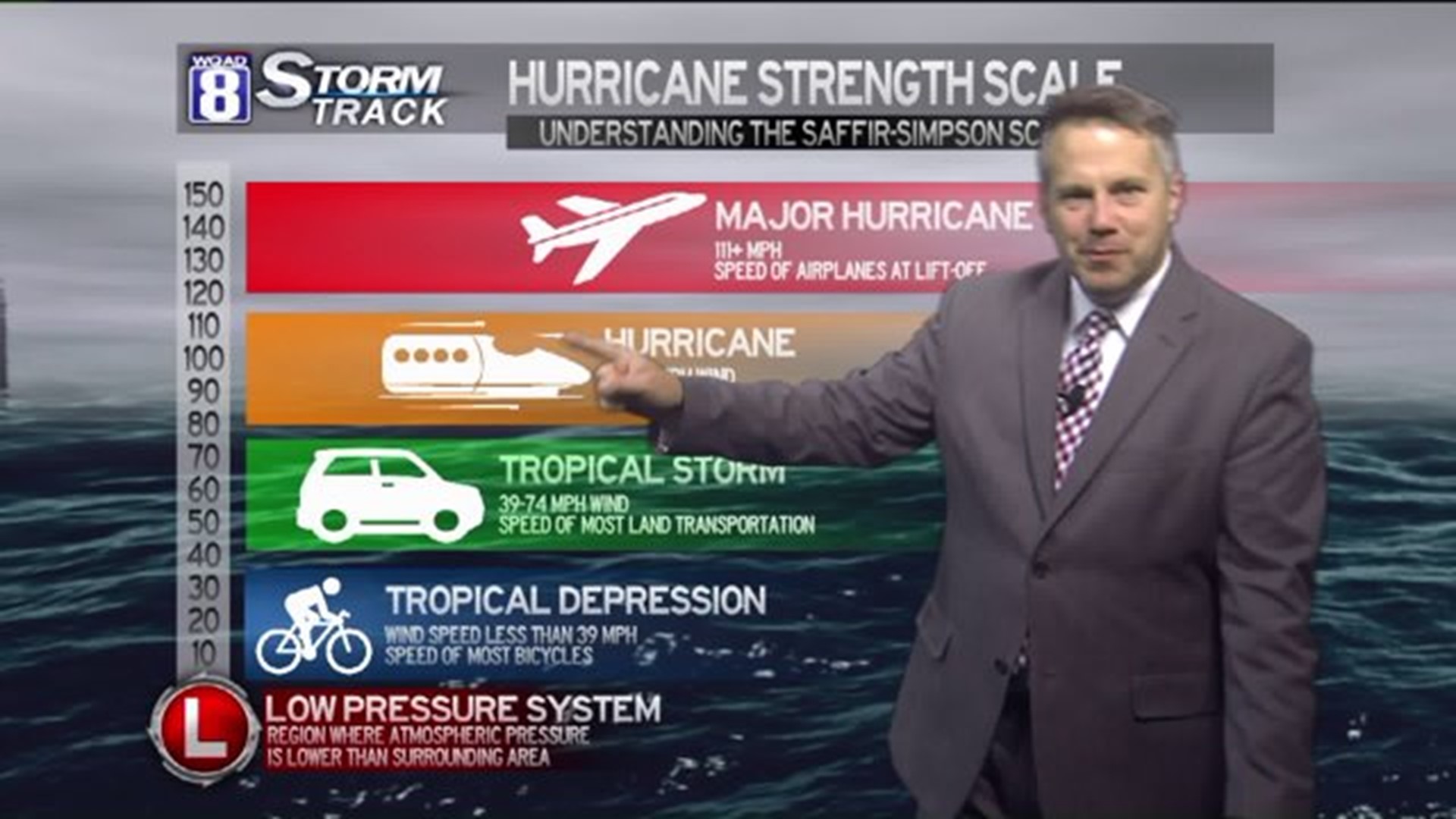Two "tropical depressions" are spinning off the Southeastern United States this morning, one just off of Fort Myers, Florida, and the other off of the Outer Banks of North Carolina.
But what is a "tropical depression" anyway? When you hear the word depression, you probably think of a low spot. That's exactly what these are on the weather maps. They are relative areas of low pressure. However, to be classified as "tropical storms" they must contain a closed-circulation of low pressure and sustained wind of 39 miles per hour.
But a better way of thinking of the relative power of tropical systems, consider the difference between a depression and a storm as the difference between a bicycle and a car. Going from a tropical storm to hurricane, think of the difference between a car and a high-speed train. And then there are major hurricanes (and "super typhoons"). Those are different from hurricanes much like the difference in power between a high-speed train and a jet-powered aircraft at lift-off.
The Saffir-Simpson Scale measures hurricane intensity. However, in recent years, Meteorologists have searched for a different way to categorize storms because the Saffir-Simpson Scale is based on wind, not flooding rain, tornado, or storm surge potential.
But the relative strength of transportation gives us a unique way of looking at the different tropical system types. And just because we haven't had a major hurricane make landfall in quite a few years, it only takes one to cause billions in damage. Even in a relatively quiet hurricane season, one landfalling hurricane can make all the difference!
-Meteorologist Eric Sorensen

